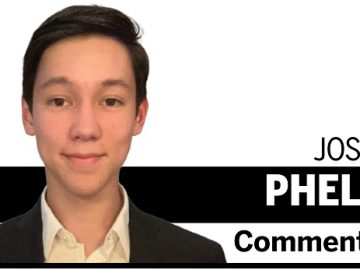As a female-founded womenswear brand, M.M.LaFleur knew its target audience was changing. Following COVID lockdowns and the massive shift toward remote and hybrid work scenarios, the brand’s founder and leadership team realized they had to evolve its product set and marketing positioning in order to maintain relevance.
Sarah LaFleur started the brand in 2013 to provide functional, comfortable yet stylish workwear for the modern woman. Overall, the brand’s goal is to show that, through its designs and styling services, M.M.LaFleur “makes women’s decisions around what to wear simpler and more joyful,” said Maria Costa, M.M.LaFleur’s Director of Brand and Integrated Marketing in an interview with Retail TouchPoints. The essence of this mission remains the same, but the brand has since expanded its clothing range to include everyday wear — something the team calls “Power Casual.”
A combination of customer surveys, feedback from its stylist team, on-the-ground conversations during brand activations and retail events and even phone calls with customers conducted by Sarah LaFleur herself proved that “customers are no longer interested in having separate wardrobes for the workday and the weekend, and they want to have more fun expressing their personal style — even through the looks they wear to work,” said Costa.
Identifying New Messaging Opportunities
Armed with an expanded product set, M.M.LaFleur also has had to evolve its marketing positioning and approach to focus on the holistic needs and lifestyles of its consumers. “The biggest adjustment to our messaging has come from leaning harder into communicating the ease and versatility of our line, a decision which was borne out of the insights we’ve received through multiple channels,” Costa explained.
But the brand needed more robust insights to ensure not only that it was focusing its marketing on the right talking points, but that its efforts were ultimately improving its standing against key competitors. Using brand tracking platform Tracksuit, the marketing and creative teams were able to identify key value propositions consumers associated with M.M.LaFleur and its product set.
By tracking unprompted word associations, M.M.LaFleur could see which messaging and values consumers were adopting. For example, some of the key words that consumers associated with M.M.LaFleur were trendy, quality, unique and stylish. Among consumers that were aware of the brand and its competitors specifically, M.M.LaFleur was deemed the brand with the highest quality and overall, the most innovative.
However, the brand noticed a stark drop-off in quality perception as consumers moved down the funnel, from awareness of M.M.LaFleur to consideration. Among consumers that were merely aware of the brand but did not consider it in their decision-making process, there was a big difference in their perception of M.M.LaFleur’s quality. The team also saw a downward trend in individuals who indicated they were aware that M.M.LaFleur “makes clothes that match my lifestyle.”
M.M.LaFleur hypothesized that some consumers had an outdated view of the brand, one that centered around its traditional workwear like dresses and suits. By digging deeper into internal and Tracksuit data, the team was able to fully quantify and communicate the revenue aftermath if the brand did not evolve its marketing messaging and approach.
“We worked with our internal analytics leader to quantify the potential revenue we were losing as our audience moved down the marketing funnel. With these insights, we were able to see as a team that fixing perceptions at the top of the funnel would directly impact lower-funnel conversion in a meaningful way,” Costa said. “Once we received the executive green light, we not only planned next steps internally, but we also sought guidance from peers in similar categories and roles to further inform strategies for testing.”
Driving Growth Through Marketing Effectiveness
With M.M.LaFleur being in “growth mode,” it had to ensure that it was evolving its brand positioning and effectively adapting all associated marketing tactics. The marketing and creative teams had to think beyond historic (and expensive) Google surveys.
“The biggest challenges were cost and level of dedicated insight,” Costa said. “We need our marketing budget to go toward initiatives that help us reach our target consumer, instead of sinking these dollars into high measurement costs. Additionally, we need to know quickly if these strategies are resonating.”
Using Tracksuit, the brand has been able to gauge overall perception in the U.S. market and track how brand health changes over time. Costa noted that while total sales generated is an industry standard for measuring marketing effectiveness, it is neither real-time nor granular. Tracksuit can make clearer, more direct connections between marketing tactics and brand health changes. “It helps us understand, in real time, what our brand health at the top of the funnel looks like,” she said. “This way, we’re able to flag adjustments that impact a consumer’s journey with us from first introduction all the way to conversion.”
Tracksuit also has been able to bolster an already data-driven team, helping them tie brand marketing initiatives to top-of-funnel brand awareness and downstream to consideration and conversion.
For example, M.M.LaFleur will measure site traffic and store visits over time to quantify the impact of an awareness campaign. With Tracksuit, the team also can “understand the effects of such a campaign for consumers who are much earlier in their journey of getting to know, and hopefully love, our brand,” Costa said. “It’s a more well-rounded approach, and we’re also able to dig into these insights by region, customer age group, household status, and income to ensure that our messaging is resonating with our target audience.”
Using a combination of data from Tracksuit along with insights from the performance marketing team and sales leaders, M.M.LaFleur can now “home in on where we should invest the most time and resources,” Costa added. “The process is quite collaborative; I will bring a particular trend to the rest of our leadership team, and they are able to understand it in the context of how it might be impacting their KPIs. From there, we’ll typically brainstorm potential action plans and build a testing strategy for executive team buy-in.”
Advanced brand insights also can unlock new opportunities for innovative campaigns and activations. For example, M.M.LaFleur hired an all-female brass band to march and perform along the street of a new store to celebrate its grand opening. And with its Ready to Run program, M.M.LaFleur is offering complimentary clothing loans to a select number of women running for public office.





